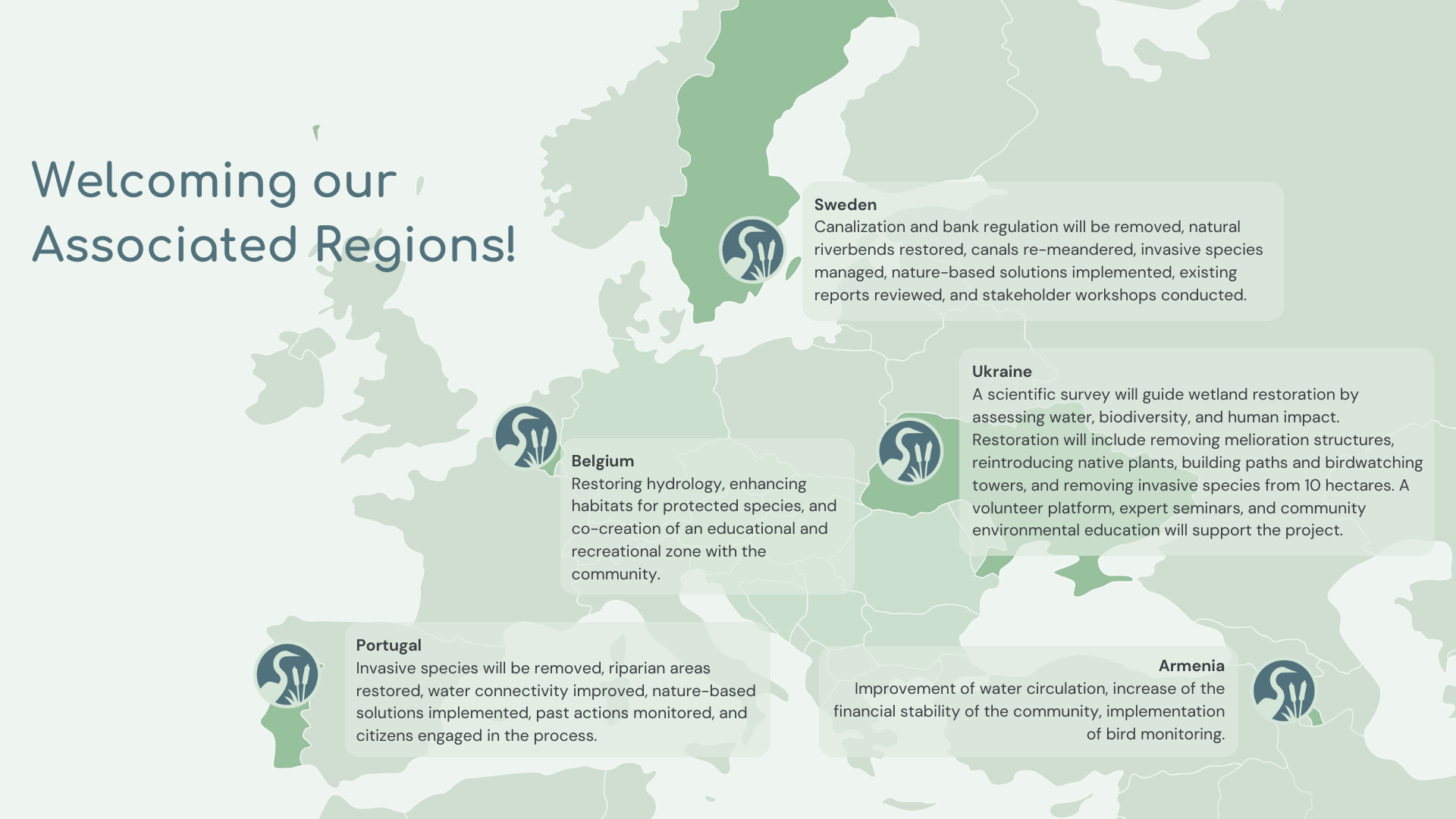Monitoring Sites
Lower Salzach Floodplains, Germany/Austria

Site features
The lower parts of the river Salzach belong to the few rivers in the alpine upland that are not dammed. About 60 km free flowing river course stretches from Salzburg to the mouth of the river Salzach into the river Inn. The floodplains of the Salzach belong to the largest wetlands of Austria. Despite being surrounded by urban structures of a densely populated region, the alluvial area is home to numerous endangered species and habitats. It provides important habitats for protected breeding and resting birds.
The main problems that occur in the region are excessive depth erosion of the riverbed, intensive forestry associated with a high share of non-natural vegetation, insufficient morphologic dynamics, hunting, lack of alluvial water bodies, as well as unsatisfactory cooperation with the fishery and tourism sectors. Thanks to successful renaturation measures the most of the problems could already be minimized/resolved in some parts of the region.
Ecosystem
Apart from the Salzach river itself (habitat type 3220), the softwood riparian forests (91E0) and hardwood riparian forests (91F0) lining it are among the most important protected goods. Rare species such as the yellow-bellied toad, Italian crested newt, red flat bark beetle, middle spotted woodpecker, or honey buzzard enjoy suitable habitats here. Many bird species overwinter in the Salzachauen or use its woods and waters as resting places on their way south.
Facts & Figures

35 Fish species occur in the Salzach

Around 5400 ha do the German and Austrian Natura 2000 areas cover between Salzburg and the mouth into the Inn

684 ha of riparian forest and arable land were already purchased for the implementation at the Austrian side

Around 50.000 people visit the riparian experience trail per year

Location
Near Salzburg at the border between Germany and Austria, 47°55’15.7″N 12°57’19.6″E
Size
Around 1,700 hectares of wetlands and surrounding habitats between Salzburg and Tittmoning are benefiting from the restoration work carried out so far.
Together with the neighbouring protected areas in Bavaria and Upper Austria, the Salzachauen have supra-regional importance for nature conservation efforts.
Existing projects
ꕥ Re-Watering of the Mittergraben on the Bavarian side of the Salzach (2002)
ꕥ Establishment of soft shores near Oberndorf with a total length of 6,2 km (2009-2010, 2014)
ꕥ LIFE Project Salzachauen (LIFE 14 NAT/AT/000496) from 10/2015 to 06/2021
ꕥ Restoration of the Lower Salzach – no-regret measures in the Tittmoninger basin (01/2021 – 04/2023)
ꕥ Restoration of “Zone B” in the Weithwörther Au (2021-2023)
Previous restoration efforts
ꕥ Purchase of riparian forest and arable land for the implementation of measures
ꕥ Removement of (concrete) embankments
ꕥ Lowering of the shoreline and flood channels and creating shallow shores
ꕥ Re-Watering and re-connection of a former sidearm (construction of a sluice gate)
ꕥ Revitalization of the water bodies and the belonging riparian areas in the floodplain
ꕥ Installation of woody debris/ groins for habitat heterogeneity and bank protection
ꕥ Extensive cessation of use on near-natural riparian forest and forest after initial measures
ꕥ Spruce stand conversion
ꕥ Creation of spawning waters for amphibians
ꕥ Development of species-rich grassland
ꕥ Visitor guidance concept: decommissioning of former forest roads and creating new routings for pedestrians and cyclists
ꕥ Construction of a new riparian forest experience path (“Auenerlebnisweg”) with Points of Interest, a bird hide, and viewing platforms
Restore4life upcoming monitoring plans
So far, the Monitoring focused on the development of terrestric fauna (birds, bats, amphibians, bugs and spiders), fishes and vegetation. In course of the Restore4Life project this will be expanded through remote sensing and citizen science methods.
Involvement of the community
The local community has been informed about the restoration plans and their implementation and was involved in the approval process. The no-regret measures were the result of a study of alternatives for measures by a response team made up of regional and local authorities as well as NGOs and other representatives of the municipality.
During the LIFE Project around 40 excursions with both experts and laymen have been taken place to give transparent insights into the restoration process. A comprehensive educational programme consisting of excursions and workshops, mainly aimed at school classes but also at adults, got permanently established after the project.
Expected Impact
ꕥ Increased habitat heterogeneity
ꕥ Improved hydrodynamics and morphodynamics
ꕥ Improved habitat conditions for young fishes, birds, insects, bugs, and amphibians
ꕥ Slowing down the deepening of the riverbed
ꕥ More and more high-quality, near-natural riparian forest will establish itself
ꕥ The riparian experience trail raised attractiveness to use the floodplain as a local recreation area and as a place to experience nature
Site gallery










